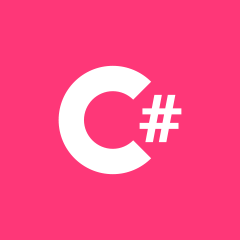在 C# 中获取 PowerShell.Invoke() 输出
我有一个应用程序,它允许用户在 Win 10 IoT 机器上配置基本的 WMI 设置。
我目前正在努力阅读所有启用的 WEKF_PredefinedKey 设置。我只是在运行一个 skript,我将它作为字符串添加到名为 ReadEnabledKeys 的项目设置中:
$CommonParams = @{"namespace"="root\standardcimv2\embedded"}
$CommonParams += $PSBoundParameters
Set-ExecutionPolicy -ExecutionPolicy RemoteSigned;
$keys = Get-WMIObject -class WEKF_PredefinedKey @CommonParams
foreach($k in $keys)
{
if($k.Enabled -eq $false)
{
"$k";
}
}
我在 C# 代码中的调用如下所示(注意:使用 System.Management.Automation):
using (PowerShell PowerShellInstance = PowerShell.Create())
{
PowerShellInstance.AddScript(Properties.Settings.Default.ReadEnabledKeys);
var result = PowerShellInstance.Invoke();
}
我的变量结果将始终为空。如果我直接在 Powershell 中运行 skript,输出就好了(所有快捷方式,目前都没有被禁用)。
我使用统一写入过滤器进行了类似的编程,我在其中启用和禁用它:
$COMPUTER = "localhost"
$NAMESPACE = "root\standardcimv2\embedded"
Set-ExecutionPolicy -ExecutionPolicy RemoteSigned;
$objUWFInstance = Get-WMIObject -namespace $NAMESPACE -class UWF_Filter;
$retval = $objUWFInstance.Enable();
if ($retval.ReturnValue -eq 0) {"Unified Write Filter will be enabled after the next system restart."}
else {"Unknown Error: " + "{0:x0}" -f $retval.ReturnValue}
和 C# 调用:
using (PowerShell PowerShellInstance = PowerShell.Create())
{
PowerShellInstance.AddScript(Properties.Settings.Default.EnableUWF);
// [0] = result or error
var result = PowerShellInstance.Invoke();
if (result[0].ToString().ToLower().Contains("enabled"))
MessageBox.Show(result[0].ToString(), "", MessageBoxButton.OK, MessageBoxImage.Information);
else
MessageBox.Show("Error when enabling the filter! " + Environment.NewLine + result[0].ToString(), "",
MessageBoxButton.OK, MessageBoxImage.Error);
}
在这里,我的结果变量将填充预期的字符串。
谁能告诉我,这是什么问题?
 人到中年有点甜
人到中年有点甜1回答
-

LEATH
问题似乎出在您的脚本上。设置ExecutionPolicy中游不会做任何事情,并且您没有编写函数,因此添加$PSBoundParameters也不会做任何事情。这是一个应该有效的示例(我将来会指定 PS 版本。由于键盘过滤,我知道您使用的是 v5.1/win10)$collection = [System.Collections.Generic.List[string]]::new()foreach ($key in (Get-CimInstance -Namespace 'root\standardcimv2\embedded' -ClassName WEKF_PredefinedKey)) { if (-not $key.Enabled) { $collection.Add($key.ToString()) }}return $collection(简化)@(Get-CimInstance -Namespace root\standardcimv2\embedded -ClassName WEKF_PredefinedKey). Where{-not $_.Enabled}. ForEach('ToString')例子:using (PowerShell ps = PowerShell.Create()){ string script = @"Import-Module -Name C:\Windows\system32\WindowsPowerShell\v1.0\Modules\Microsoft.PowerShell.Management\Microsoft.PowerShell.Management.psd1 -ErrorAction Stop; @(Get-WmiObject -Namespace root\standardcimv2\embedded -Class WEKF_PredefinedKey -ErrorAction Stop).Where{-not $_.Enabled}.ForEach('ToString')"; ps.AddScript(script); var result = ps.Invoke();}
 随时随地看视频慕课网APP
随时随地看视频慕课网APP
相关分类

 C#
C#